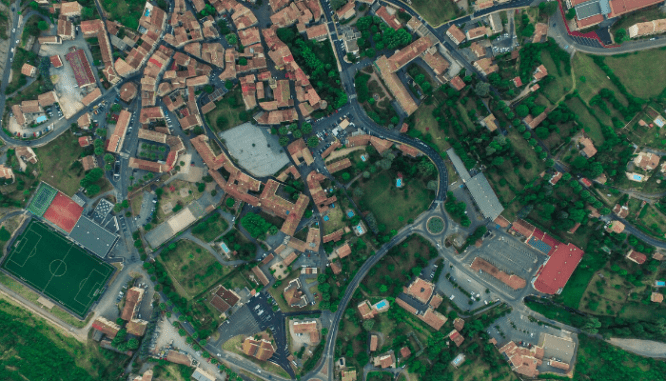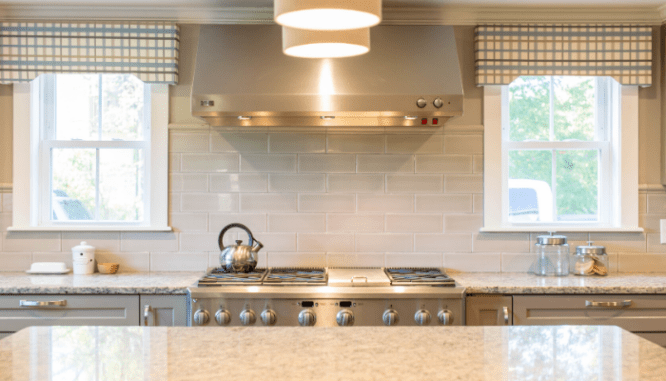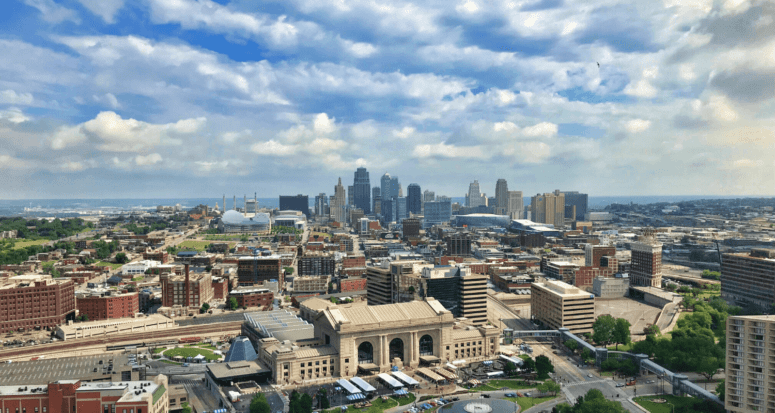Your Essential Guide To Buying A House in Kansas City, a Midwest Jewel
- Published on
- 5-6 min
-
 Rachel Russell Contributing AuthorClose
Rachel Russell Contributing AuthorClose Rachel Russell Contributing Author
Rachel Russell Contributing AuthorRachel Russell is an author represented by a literary agent, as well as a content marketer and editor. She is knowledgeable about all things home shopping, landscaping, decor, and budgeting as a first-time homebuyer.
The relaxing tunes of jazz music drift on the orange-splashed evening air in Kansas City, which 2.34 million people call home. There’s something for everyone, whether you crave the best BBQ in the country or a thrilling trip to where Lewis and Clark landed in 1804.
Ranked in the Top 50 Best Places to Live, it’s no surprise that Kansas City homes sell fast. According to Gregory Weis, who has more than 15 years of experience as a top-selling real estate agent in Kansas City, many homes are on the market for only four or five hours before being whisked away with multiple offers.
In the jewel of the Midwest, you need a top real estate agent to bid fast or you risk losing out.
We interviewed the top experts in the real estate field, found the highest-rated neighborhoods, and crunched the numbers for the cost of living and more. This comprehensive guide will reveal all the most popular entertainment spots, the best barbeque in the area, and how to figure out whether you’ll need flood insurance for your dream home.

How money in your pocket fares
A culturally diverse place, Kansas City is rich with exciting experiences and delicious food that won’t destroy your wallet. Simply put, it’s one of the most affordable cities in the Midwest.
To rent or to own
The Kansas City real estate market is thriving. The city came in seventh in 2015 for having the least-expensive single-family homes around.
The average price for a single-family home in the United States rose 2.9% through 2019 to an all-time high of $270,000. According to a March 2019 American Housing Survey by the U.S. Census Bureau, the median monthly mortgage payment for Americans is $1,030.
Not so in Kansas City. It’s one of three major metros to experience a price drop of 9.4% in 2019, leaving the median price of a home here at $172,098. This is why the city is experiencing a boom in homebuyers: the median monthly mortgage payment here is just $782.04.
As far as the rent versus own argument goes, rent prices are shockingly low for a large city. In 2019, a three-bedroom apartment ran about $1,190 in Kansas City. That’s well below the national average of $1,607.
It’s cheaper to rent in Kansas City than much of the country, but your average monthly mortgage payment is also lower and therefore a good investment.
Low cost of living keeps your account balance high in Kansas City
Kansas City offers the entertainment of a big city, but with far lower prices than much of the country. As of December 2019, the cost of living is 75% cheaper than other cities in the United States and has an average sales tax of 7.9%.
A couple can enjoy a romantic dinner at Anthony’s, an authentic Italian restaurant, and get appetizers, a main course, wine, and dessert for around $60 as of December 2019.
Add in a 3.29% annual growth in median income, and buying a house in Kansas City looks more appealing than ever!

Kansas City housing stock: You’ll see lots of single-family Shirtwaists
Single-family houses make up more than 60% of the housing stock in Kansas City. One of the more common styles you’ll find is the Shirtwaist, a local variation of the Foursquare.
Stone or brick make up the first floor of Shirtwaist houses, with stucco or wood for the upper stories. These homes typically span 2.5 stories and have side projections for where the stair landings and bay windows are.
The most striking feature of a Shirtwaist home is its front porch stretching the full width of the house. It’s the perfect spot to relax in a wicker chair and sip your favorite drink.
If you value extensive wood trimming, fireplaces, and an open floor plan, bungalows are one of the other common house types to be found. The Craftsman bungalow specifically one that Kansas City is famous for.
You can find most of these historic Craftsmans, built from 1910 to 1930, on 47th Street, 75th Street, Wornall Road, and the Paseo.
The majority of homes in Kansas City use a traditional HVAC system for heating and cooling. Many also feature a fireplace due to the popularity of the Craftsman and Shirtwaist.
Attics, basements for storm shelter, and crawl spaces are also quite common. Vented crawl spaces are most often found in older homes because building standards once required them in Kansas City.
If you’re renting, then colonnades are not only common but distinct.
A historic type of apartment complex from the 1910s, colonnades are identified by their large multi-level front porches and massive multi-story columns. The rest of the structure is typically made of red brick.
Colonnades hold a special place in Kansas City architectural history and are on the National Historic Register.
Kansas City offers small-town warmth, big-city attractions
If you love food, art, and history, Kansas City will delight you at every turn.
Craving the best BBQ the country has to offer? Look no farther than Joe’s Kansas City Bar-B-Que. They won the 2017 title of Grand Champion in the Kansas State Championship for Best BBQ. Anthony Bourdain even deemed the restaurant one of “13 Places to Eat Before You Die“.
For the history buff, jazz music and history come together at the American Jazz Museum. Next, make a stop at the nationally-recognized WWI museum.
Or if you have young children, try the LEGOLAND Discovery Center instead, where they can build and create with LEGOs to their heart’s content. In Kansas City, you never have to worry about their education, either, because it has an average Great Schools score of 7 and up.
Where neighbors smile and wave
Stroll down the mural-lined streets to find a variety of unique shops, dining establishments, and events. While Kansas City is an industrial metropolitan area, the rolling hills of the countryside are a mere thirty minutes away.
It is a literal homebuyers’ paradise. You can live it up large with the city life, or enjoy the peace and privacy of a smaller suburb area.
And traveling around Kansas City is a breeze.
There are major interstates, like I-35, I-70, and I-435, that crisscross the city. If you get on 435, you’ll make a big loop around the city. You can be anywhere you want in no time.
If you don’t drive, no problem. The KC Streetcar is free to ride and runs from Union Station down to the River Market, makes a loop along Grand and Delaware, then goes to 3rd and 5th Streets.
There are many neighborhoods within Kansas City, but some of the top-rated ones are:
River Market
This riverfront neighborhood lies south of the Missouri River and was the first incorporated district in Kansas City. River Market is an urban village that is steeped in history.
Every Saturday morning, you can wake up early and stroll to the City Market’s Farmers’ Market. It’s the largest open-air farmers’ market in the Midwest, offering some of the finest fresh produce around.
The southern portion of the market was once the public square of the original town in the mid-1800s. There was even a mob war in the River Market back in the 1970s.
Benefits:
- River Market is highly walkable, with a Walk Score of 79.
- Within walking distance is the City Market, River Market’s “market” namesake, which hosts the largest open-air farmers’ market in the Midwest every Saturday morning.
- Craving some live jazz entertainment from the once “Paris of the Plains“? The Phoenix is a short drive away. You can even go to a Jazz Brunch event on Saturdays and Sundays!
Drawbacks:
- The River Market is a popular tourist area and has high traffic and crowds on foot.
- Parking can be a struggle, especially on the weekends from tourists visiting.
Westside
Taking a stroll down any tree-lined side street in Westside is like being in a movie. The urban neighborhood is a multicultural bohemian area with Latino and Mexican-American influences. Westside was even named one of the country’s top 10 neighborhoods in 2008 by Cottage Living magazine.
Residents are always throwing parties and gatherings in this tight-knit community. If you’re in the mood to explore and have fun, then you can visit the Crossroads Arts District or the Crown Center, an 85-acre retail and entertainment complex.
Benefits:
- When you visit any of the shops in Westside, you’ll also be supporting local artists by buying their wares.
- Vibrant, diverse restaurants pack this neighborhood, so you’ll never grow bored with your options.
Drawbacks:
- There are a number of souvenir shops and, in turn, heavy tourist crowds.
The Country Club Plaza
This suburban shopping district features a massive open-air public art gallery.
You can spend an evening on a charming horse-drawn carriage ride and enjoy the wondrous Spanish-influenced architecture. Or take a gondola float down the Brush Creek and watch custom iron wrought sculptures and statues pass by.
Wherever you go in Country Club Plaza, you will be delighted by fountains and hand-painted mosaics and more.
Most residents live on the outskirts of the shopping areas. The homes you’ll see range between condominiums, apartments, and single-family houses. That doesn’t mean you can’t walk with ease to wherever you want, though.
Benefits:
- The Plaza boasts a great Walk Score of 86 and is the fourth-most-walkable neighborhood in the metro.
- This neighborhood flaunts a high AreaVibes rating of 84.
- If you enjoy symphonies and ballets, the Kauffman Center for the Performing Arts is just a short drive away up Broadway Boulevard.
Drawbacks:
- Parking is difficult on the weekends when crowds visit for the shopping district.

Pro tips for Kansas City buyers: Watch out for poor drainage and grading
Buying a home in Kansas City is an exciting prospect, but don’t rush in without gathering information. There are a few common house issues you should be aware of, some additional costs to consider, and more.
Problems to spot
Drew Gordon of Gordon & Associates, a home inspector with over 15 years of experience who is ASHI Certified, says the most common issues he’s found with homes in Kansas City are “improperly installed roofs and poor grading toward the house.”
Nearly every home he’s recently inspected had roofing problems. He believes some of the problem stems from newer contract workers with a lack of training and experience.
Poor drainage and grading also plague homes. Drew stated that too many owners simply “don’t make it a priority” and that the city itself does not enforce grading regulations. A lack of proper grading can lead to basement flooding, so be sure to inspect the lower level of a home for recent signs of water and know that you may need to invest in a sump pump.
Several other factors also contribute to home flooding in Kansas City.
The city averages 42 inches of rainfall per year, while most other states get a mere 38 inches. Coupled with that is the city’s position alongside the mighty Missouri River.
The most common areas to experience flooding after a heavy storm are downtown near Brush Creek and West 103rd Street near Indian Creek. It’s recommended that all homeowners purchase flood insurance if their home is located in a floodplain.
Flood policy costs depend on the flood zone risk, but in 2017 the average cost in Missouri amounted to $1,000 per year.
Luckily, thanks to the city’s efforts, homeowners are eligible to get a reduction in their flood insurance premiums.
Because of the high rainfall average and cases of flooding, homebuyers should invest in an ancillary inspection for mold testing. Mold can cause allergic reactions or even more severe problems. You’ll want to set aside a bit of money for the mold inspection because the price ranges between $300 to $500 for an average-sized property.
Upgrade trends and when to shop
Once you’re certain the house is in good shape, take stock whether it’s had any recent upgrades.
Some of the most common upgrades are lately focused in the kitchen. Granite, quartz, and marble are all popular as countertop surfaces right now. Finished basements are also growing in popularity, and houses featuring these tend to sell fast on the open market.
After you’ve taken all these factors into account, be sure to find out what time of year is the best time to buy. For example, in Kansas City, homes linger on the market longest (and sell for the cheapest) in February, but you might not have a full selection of inventory to choose from if you decide to shop then.
Work with a top Kansas City agent to snatch up your dream home
According to real estate agent Gregory Weis, who sells homes 45% quicker than the average Kansas City agent, homebuyers need to “make sure they’re pre-approved” so that “when a house comes, you’re ready to go.” He’s seen houses only on the market for four to five hours before gathering multiple offers, so it’s important to move fast.
Weis also advises home buyers to “be patient and not get frustrated.” Bidding wars are common, so cash buyers who’ve already sold a house often can win bids.
All of this means a top real estate agent is essential if you want to land the house of your dreams.
There are many real estate agents, but not all of them will be able to bring experience and skill to the table. The housing market is competitive, and you’ll want every edge you can get if you want to buy a house in Kansas City.
Homes move fast since there are only two to six months of inventory at a time, and a top buyer’s agent can also save you $23,086 on your home purchase — that’s a lot of Italian meals or racks of ribs! Without an experienced real estate agent to stay on top of things and put in a bid, you’ll likely lose out.
Choose one of our listed experts and you can be confident in knowing the very best is fighting on your side.
Header Image Source: (Chris Faille/ Shutterstock)

